When we think of venomous animals, snakes, scorpions, and spiders typically come to mind. However, the natural world harbors a fascinating array of creatures that employ venom in unexpected and sometimes ingenious ways. From the depths of the ocean to forest canopies, evolution has equipped numerous species with specialized venom delivery systems that serve purposes beyond simply killing prey. These toxic arsenals can function as defense mechanisms, digestive aids, reproductive tools, and even components of elaborate mating rituals. Let’s explore fourteen remarkable creatures whose venomous adaptations demonstrate nature’s astonishing capacity for innovation.
The Slow Loris A Deceptively Cute Toxic Primate
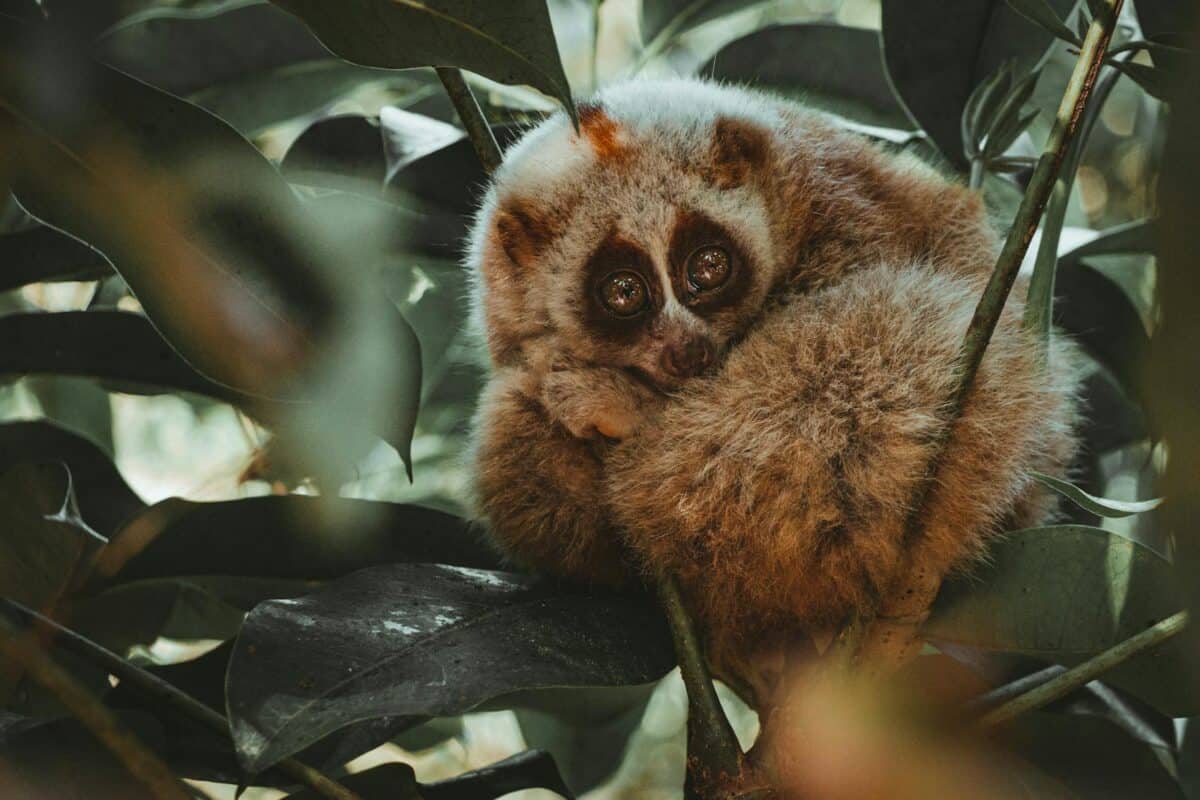
With their large eyes and seemingly gentle demeanor, slow lorises might appear harmless, but these small primates harbor a secret chemical weapon. Native to Southeast Asia, slow lorises (Nycticebus spp.) are the world’s only venomous primates. Their toxin is produced from a gland on their inner elbow, which they lick and mix with saliva to activate. When threatened, they raise their arms above their head in a defensive posture, appearing to surrender, but actually preparing to deliver a toxic bite.
What makes their venom particularly unusual is its composition. It contains a protein similar to the allergen in cat dander, which can cause severe anaphylactic reactions in humans. Slow lorises primarily use their venom for defense against predators and competing lorises, but researchers have also observed mothers applying venom to their young as a form of protection. This remarkable adaptation in a mammalian species demonstrates how venom has evolved independently across diverse animal groups.
Platypus The Venomous Mammalian Oddity

The duck-billed platypus (Ornithorhynchus anatinus) already stands out as one of nature’s most peculiar creatures – an egg-laying mammal with a duck-like bill, beaver-like tail, and otter-like feet. Adding to its list of oddities, male platypuses possess venomous spurs on their hind legs, making them one of the few venomous mammals. During breeding season, males become particularly aggressive and use these spurs against competing males.
The platypus venom contains a complex cocktail of at least 19 different peptides and proteins, some unique to this species. While not lethal to humans, the venom causes excruciating pain that can last for weeks and is resistant to conventional painkillers, including morphine. Scientists are studying platypus venom components for potential applications in pain management, as they target different pain receptors than traditional medications. Interestingly, the venomous capability appears to have evolved primarily for male competition rather than predator defense or prey capture.
Geographer Cone Snail Lightning-Fast Underwater Hunter

The geographer cone snail (Conus geographus), sometimes called the cigarette snail because “you have just enough time to smoke a cigarette before you die,” is among the most venomous creatures in the ocean. These seemingly slow and harmless mollusks have evolved a sophisticated harpoon-like modified tooth that they can project at remarkable speed to catch prey. When hunting, the cone snail releases a cloud of insulin into the water, causing blood sugar levels in nearby fish to plummet, slowing them down significantly.
The cone snail’s venom is a complex cocktail containing hundreds of different compounds called conotoxins, each targeting specific parts of the nervous system. What makes this venom particularly surprising is its precision and pharmaceutical potential. Scientists have developed a pain medication called Prialt from cone snail venom that is 1,000 times more powerful than morphine without causing addiction. Other cone snail compounds are being studied to treat epilepsy, Alzheimer’s, and Parkinson’s disease. The snail’s ability to synthesize such pharmacologically valuable compounds makes it not just deadly but potentially lifesaving for humans.
Blue-Ringed Octopus Tiny But Deadly

The blue-ringed octopus (genus Hapalochlaena) might be small enough to fit in the palm of your hand, but it carries enough venom to kill 26 adult humans within minutes. Native to tide pools and coral reefs in the Pacific and Indian Oceans, these cephalopods are normally brownish in color but display vibrant blue rings when threatened – a warning sign that’s as beautiful as it is dangerous.
What makes this octopus’s venom especially unique is its composition and delivery method. Unlike many venomous creatures, the blue-ringed octopus doesn’t have fangs or stingers. Instead, it delivers tetrodotoxin (TTX) – the same neurotoxin found in pufferfish – through its saliva when it bites. The venom works by blocking sodium channels in nerve cell membranes, leading to respiratory arrest and paralysis. Most surprisingly, the octopus doesn’t produce this toxin itself but harbors symbiotic bacteria that manufacture it. This relationship between the octopus and bacteria represents one of nature’s most lethal partnerships, showing how venom production sometimes extends beyond the animal’s own biology.
Gila Monster The Venomous Desert Dweller
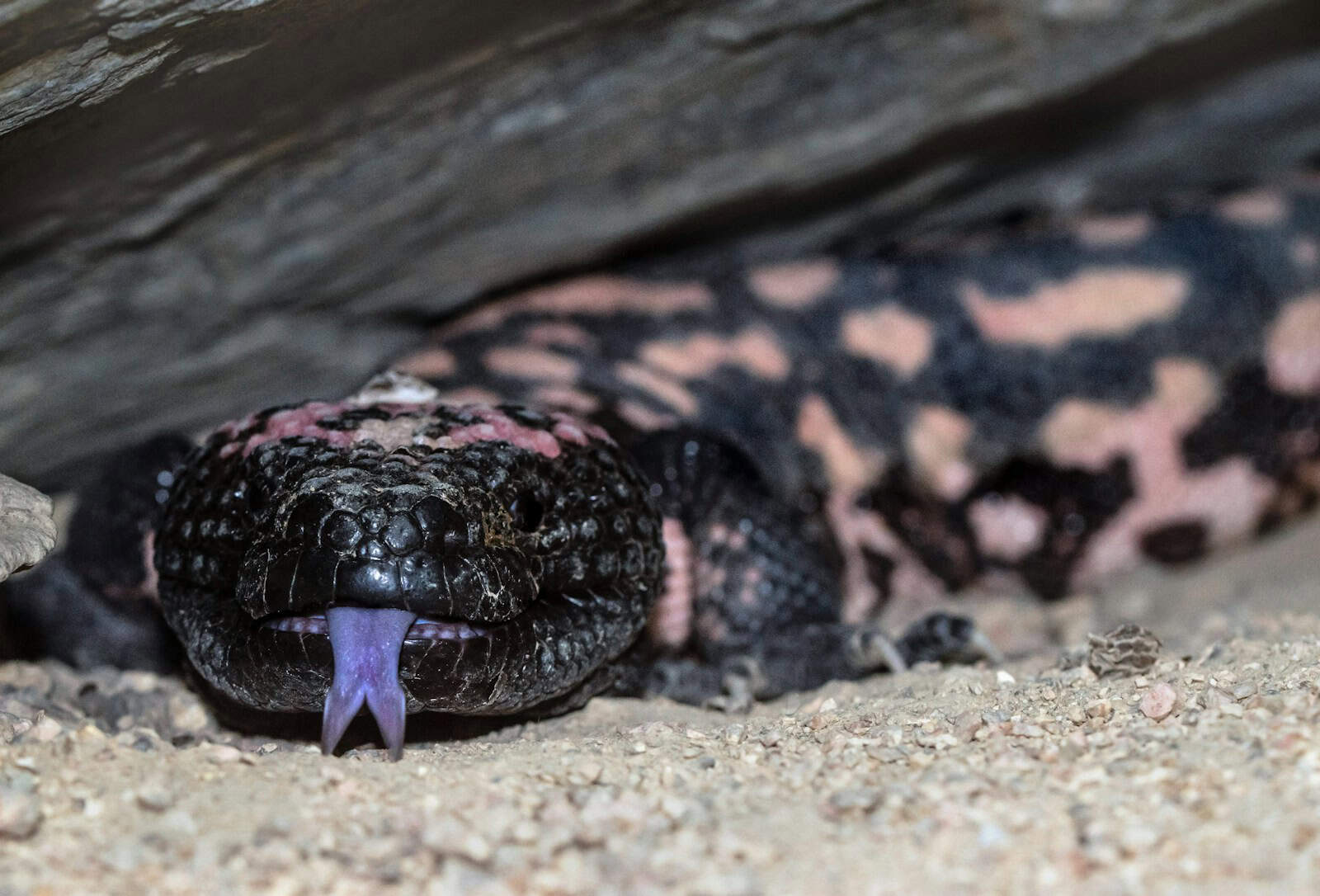
The Gila monster (Heloderma suspectum) is one of only two venomous lizard species in the world, both belonging to the Helodermatidae family. These unmistakable reptiles, native to the southwestern United States and northwestern Mexico, possess stocky bodies with bright pink or orange and black beaded scales. Unlike most venomous creatures that use their venom primarily for hunting, Gila monsters employ their toxic bite mainly as a defensive mechanism.
What sets the Gila monster’s venom delivery system apart is its unusual chewing mechanism. Rather than injecting venom through hollow fangs like snakes, Gila monsters have grooved teeth in their lower jaw. When they bite, they tenaciously hold on and chew, allowing venom from specialized glands to flow into the wounds. Their venom contains a compound called exendin-4, which has led to a breakthrough in medical science. This compound formed the basis for the development of a medication called exenatide (Byetta), used to treat type 2 diabetes. The drug helps stimulate insulin production in response to elevated blood sugar levels, demonstrating how a defensive adaptation in a desert reptile has become a valuable therapeutic tool for millions of people worldwide.
Centipedes Venomous Arthropods with Ancient Toxins
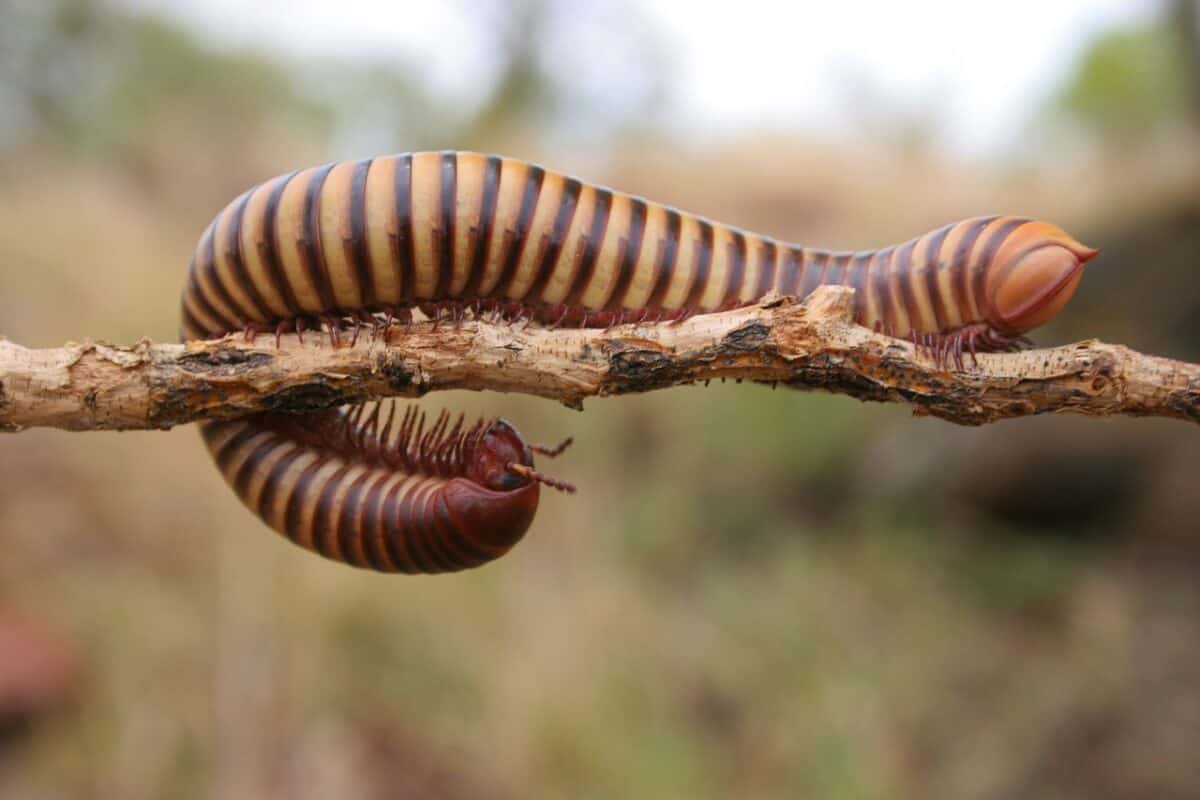
Centipedes represent one of the earliest groups of terrestrial predators to evolve venom, with a toxic arsenal dating back over 400 million years. Unlike many venomous creatures that developed specialized organs for venom delivery, centipedes adapted their first pair of legs into powerful venom claws called forcipules. These modified appendages connect directly to venom glands and function essentially as fangs, allowing centipedes to quickly immobilize prey much larger than themselves.
What makes centipede venom particularly fascinating is its complexity and versatility. Research has identified over 500 distinct components in the venom of just a single species, Scolopendra subspinipes. This complex cocktail contains neurotoxins, enzymes, and peptides that can cause intense pain, muscle damage, and cardiovascular effects. Giant centipedes (Scolopendra genus) can even capture and consume vertebrates, including bats, mice, and small snakes. Surprisingly, centipede venom contains compounds with potential medical applications, including antimicrobial peptides and analgesics. Chinese traditional medicine has used centipedes for centuries to treat ailments ranging from tetanus to seizures, and modern research is beginning to validate some of these applications, highlighting how even feared venomous creatures may provide significant benefits to human health.
Pufferfish Poisonous Delicacy With a Twist

Pufferfish (family Tetraodontidae) are known worldwide for their remarkable ability to inflate their bodies when threatened and for containing a potent neurotoxin called tetrodotoxin (TTX). While technically poisonous rather than venomous (the distinction being that venom is actively injected while poison is passively delivered when touched or ingested), some pufferfish species blur this line in surprising ways. The blackspotted puffer (Arothron nigropunctatus) doesn’t just store tetrodotoxin in its internal organs – it can actively secrete the toxin through its skin when stressed.
Even more fascinating is how pufferfish obtain their toxicity. They don’t produce tetrodotoxin themselves; instead, they accumulate it through their diet and through symbiotic bacteria. This has led to the intriguing phenomenon of non-toxic pufferfish raised in captivity without access to the bacteria that produce TTX. In Japan, where pufferfish (fugu) is considered a delicacy, specially licensed chefs train for years to safely prepare the fish, carefully removing the toxic organs while leaving trace amounts that create a tingling sensation prized by culinary adventurers. The pufferfish’s relationship with its toxin demonstrates nature’s complex symbiotic relationships and how cultural practices have evolved around dangerous yet fascinating creatures.
Lionfish Beautiful Invaders with Venomous Spines
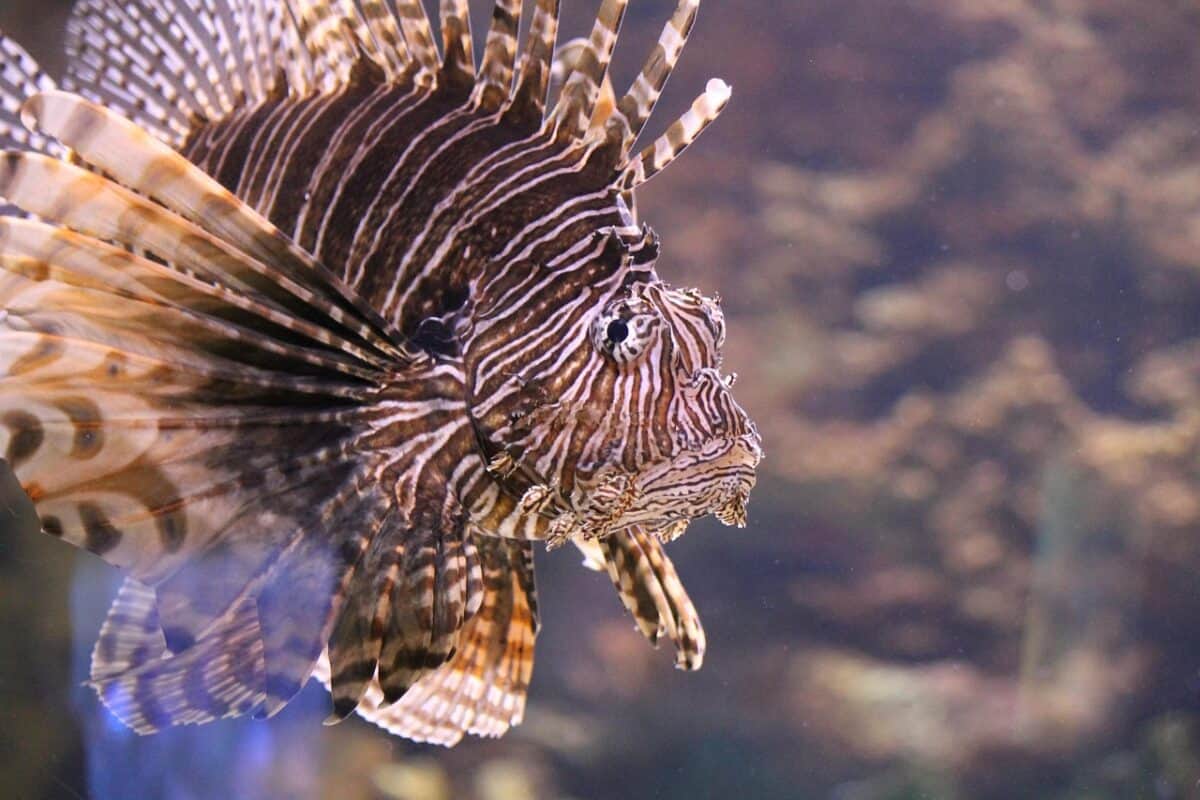
Lionfish (Pterois genus) are immediately recognizable by their stunning striped pattern and fan-like array of venomous spines. Native to the Indo-Pacific region, these fish have become notorious invasive species in the Atlantic Ocean and Caribbean Sea, where they have no natural predators. What makes the lionfish’s venom system unique is its purely defensive nature. Unlike most venomous predators, lionfish don’t use their venom to capture prey; instead, they rely on their remarkable speed and ambush tactics.
The lionfish’s venom delivery system consists of 18 needle-like dorsal spines, each containing two venom glands that run along grooves in the spine. When a predator makes contact with these spines, the thin sheath covers them tears, allowing the venom to travel up the grooves and into the wound. The venom contains acetylcholine and a neurotoxin called pterotoxin that causes intense pain, swelling, and in rare cases, paralysis and heart failure. Interestingly, lionfish are virtually unaffected by the venom of their own species, allowing them to live in close proximity without harming each other. This specialized defense mechanism, combined with their voracious appetite and rapid reproduction, has made them one of the most successful marine invaders in history. Conservation efforts now include promoting lionfish as a food source, with careful handling techniques to remove the venomous spines before consumption.
Male Platypus Duck Seasonal Venom Production

The male platypus (Ornithorhynchus anatinus) undergoes a remarkable seasonal transformation in its venom production that deserves special attention. During the breeding season, male platypuses experience a surge in testosterone that dramatically increases both the production and potency of their venom. This timing is no coincidence – the venom serves primarily as a weapon against competing males rather than as a defense against predators or a tool for hunting.
What makes this seasonal venom production particularly surprising is how it showcases the link between reproductive biology and toxin development. The venom glands, connected to hollow spurs on the hind legs, increase in size during breeding season by up to ten times their normal volume. The composition of the venom itself also changes, becoming more complex and potent. Scientists have identified a unique C-type natriuretic peptide in platypus venom that causes rapid drop in blood pressure and intense pain that can last for weeks or even months. This seasonal venom system represents an evolutionary solution to male competition that is unique among mammals and provides insights into how venom systems can evolve to serve highly specialized purposes related to reproduction rather than predation.
Spitting Cobra Precision Venom Delivery at a Distance
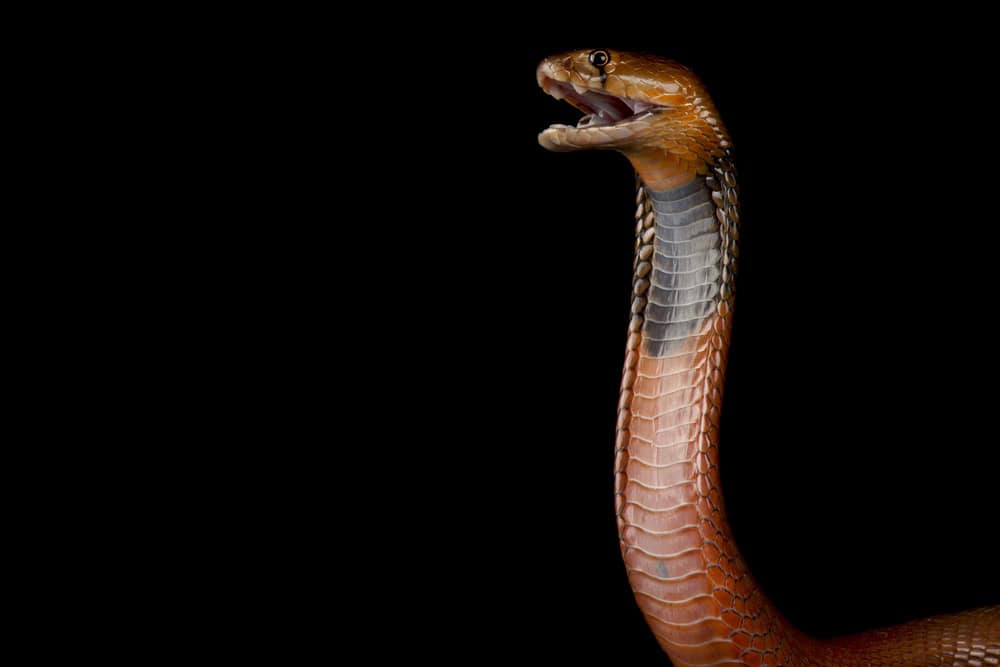
Spitting cobras, found in the genera Naja and Hemachatus, have evolved perhaps one of the most sophisticated venom delivery systems in the animal kingdom. Unlike typical venomous snakes that must bite their target, spitting cobras can project their venom up to 2 meters (6.6 feet) with remarkable accuracy. This adaptation allows them to defend themselves without coming into direct contact with threats, a significant advantage against predators.
The mechanics behind this impressive ability involve specialized modifications to the cobra’s fangs. While most venomous snakes have venom delivery channels that exit at the tip of the fang, spitting cobras possess forward-facing openings near the tip, creating a nozzle-like structure. When threatened, these cobras contract muscles around their venom glands with precise timing to force venom through these modified fangs, often aiming directly for the eyes of their target. High-speed photography has revealed that spitting cobras can track a moving target and adjust their “aim” accordingly, demonstrating remarkable neurological coordination. The venom itself is specially adapted for this delivery method, containing compounds that cause intense pain and potential blindness upon eye contact rather than the primarily neurotoxic components found in the venom of non-spitting cobra species. This adaptation shows how venom can evolve not just in composition but also in delivery mechanics to serve specialized defensive functions.
Komodo Dragon Bacteria or Venom?

The Komodo dragon (Varanus komodoensis), the world’s largest lizard, has long been thought to kill through a combination of vicious bites and bacteria-laden saliva that causes sepsis in wounded prey. However, groundbreaking research in 2009 revealed that these impressive reptiles actually possess genuine venom glands. This discovery significantly changed our understanding of these ancient predators and expanded the known distribution of venom in the animal kingdom.
What makes the Komodo dragon’s venomous adaptation particularly fascinating is its dual-purpose nature. Unlike most venomous creatures that deliver a concentrated dose of toxins through specialized apparatus like fangs or stingers, Komodo dragons secrete venom from glands in their lower jaws when they bite. This venom contains compounds that prevent blood clotting and induce shock, causing rapid blood pressure drops in prey animals. The venom works synergistically with the dragon’s serrated teeth and powerful bite to create wounds that bleed profusely. Additionally, their saliva does contain numerous bacteria, creating a two-pronged attack system. This combination of venom and bacteria, along with their patient hunting strategy of biting and then following wounded prey until it succumbs, makes the Komodo dragon’s predatory adaptation uniquely effective. Their venom system represents an evolutionary middle ground between typical venomous delivery systems and the mechanical damage inflicted by non-venomous predators, challenging our traditional categorizations of how predators subdue their prey.
Hooded Pitohui The Toxic Bird

The hooded pitohui (Pitohui dichrous) of New Guinea represents one of the most surprising toxic adaptations in the bird world. While technically poisonous rather than venomous, this colorful bird deserves mention for its extraordinary chemical defense. Indigenous people have long known these birds were toxic, calling them “rubbish birds” due to their inedibility, but it wasn’t until 1990 that Western scientists discovered they contained batrachotoxin—the same powerful neurotoxin found in poison dart frogs.
The truly remarkable aspect of the pitohui’s toxicity is its source. These birds don’t produce the poison themselves but acquire it from their diet of Choresine beetles, which contain batrachotoxin. The pitohui then sequesters these compounds in their skin and feathers as a defensive mechanism against predators. Their bright orange and black coloration serves as a warning sign to potential threats, a classic example of aposematic coloration. When handling these birds, researchers often experience numbness and burning sensations on their skin, earning pitohuis the nickname “bitter birds.” This dietary acquisition of toxins by a bird species demonstrates convergent evolution with poison dart frogs, which similarly obtain their toxins from their diet. This specialized adaptation blurs the line between venomous and poisonous defenses and shows how toxins can be repurposed across vastly different animal groups through ecological relationships and diet specialization.
Conclusion
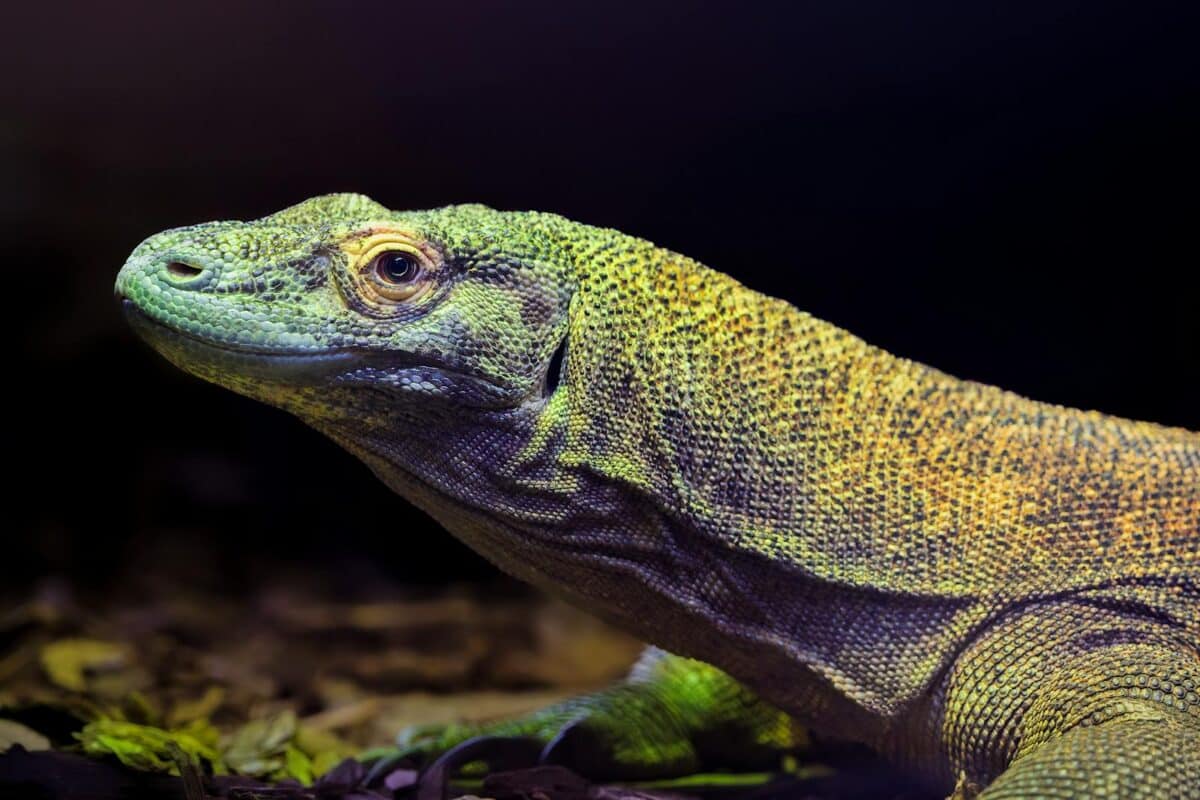
Venom is far more versatile and fascinating than many people realize. Across land, sea, and air, creatures have evolved to use venom not just for hunting, but also for defense, mating, digestion, and survival in highly specialized ways. These remarkable adaptations reveal the creativity of evolution and challenge our traditional views of what it means to be venomous. By understanding the surprising ways different species wield venom, we gain a deeper appreciation for the complexity and ingenuity of the natural world.
- 12 Creatures That Use Venom in Surprising Ways - August 13, 2025
- 13 Wild Mammals That Form Life-Long Friendships - August 13, 2025
- 12 Dogs That Turn on Their Owners When Poorly Trained - August 13, 2025

